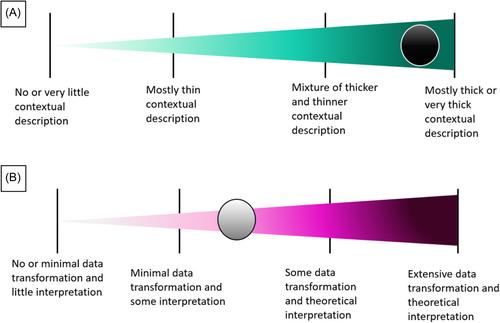Assessing qualitative data richness and thickness: Development of an evidence-based tool for use in qualitative evidence synthesis
Abstract
Background
Well-conducted qualitative evidence syntheses (QESs) can provide invaluable insights into complex phenomena. However, the development of an in-depth understanding depends on the analysis of rich, thick data from the included primary qualitative studies. Sampling may be needed if there are too many eligible studies. Data richness and thickness are among several criteria that can be taken into consideration when sampling studies for inclusion. However, existing tools do not address explicitly the assessment of both data richness and thickness in the context of QES.
Methods
To address this gap, we have developed, piloted, and conducted initial user testing of a richness and thickness assessment tool. The tool has been in development since 2014. Three pilot versions from three review teams have been used in six Cochrane reviews. Key members from the original three review teams subsequently came together to create a consensus-based definitive version 1 of the tool. Four review authors piloted the version 1 tool, which has been subject to initial user testing. The version 1 assessment tool consists of two components: assessing the thickness of contextual data and assessing the richness of conceptual data. The accompanying guidance emphasizes the importance of assessing data that addresses the review question.
Results
The paper provides guidance on how to apply the tool, emphasizing the importance of reaching a consensus among review authors and fostering a shared understanding of what constitutes rich and thick data in the context of the review. The potential challenges related to the time and resource constraints of this additional review process are acknowledged.
Conclusion
Version 1 of the tool represents a significant development in QES methodology, filling a critical gap and enhancing the transparency and rigor of the sampling process. The authors invite feedback from the research community to further test, refine and improve this tool based on wider user experiences.


 求助内容:
求助内容: 应助结果提醒方式:
应助结果提醒方式:


